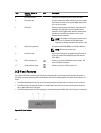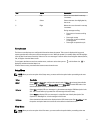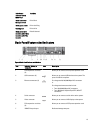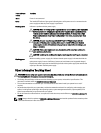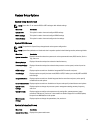
2
Using The System Setup And Boot Manager
System Setup enables you to manage your system hardware and specify BIOS-level options.
The following keystrokes provide access to system features during startup:
Keystroke
Description
<F2>
Enters the System Setup.
<F10>
Enters System Services, which opens the Dell Lifecycle
Controller 2 (LC2). The Dell LC2 supports systems
management features such as operating system
deployment, hardware diagnostics, firmware updates, and
platform configuration, using a graphical user interface.
The exact LC2 feature set is determined by the iDRAC
license purchased. For more information, see the Dell LC2
documentation.
<F11>
Enters the BIOS Boot Manager or the Unified Extensible
Firmware Interface (UEFI) Boot Manager, depending on
the system's boot configuration
.
<F12>
Starts Preboot Execution Environment (PXE) boot.
From the System Setup, you can:
• Change the NVRAM settings after you add or remove hardware
• View the system hardware configuration
• Enable or disable integrated devices
• Set performance and power management thresholds
• Manage system security
You can access the System Setup using the:
• Standard graphical browser, which is enabled by default
• Text browser, which is enabled using Console Redirection
To enable Console Redirection, in System Setup, select System BIOS → Serial Communication screen → Serial
Communication, select On with Console Redirection.
NOTE: By default, help text for the selected field is displayed in the graphical browser. To view the help text in the
text browser, press <F1>.
Choosing The System Boot Mode
System Setup enables you to specify the boot mode for installing your operating system:
• BIOS boot mode (the default) is the standard BIOS-level boot interface.
17




